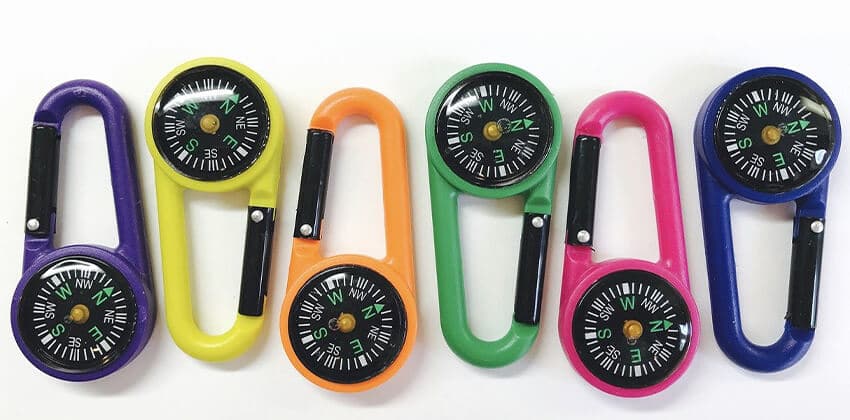
Is your job search dragging on with no end in sight?
If so, do any of these problems sound familiar?
When you reach out to others on LinkedIn, they don’t respond.
You’ve been told to use LinkedIn, and you’ve dutifully filled in Profile information, but you’re not sure if it represents you adequately.
Your phone and email stay silent while others grab the jobs that should go to you.
If those do feel familiar, there could be simple reasons why you’re experiencing a slow job search. Take a look at these LinkedIn issues (common to frustrated candidates), along with quick fixes to get better results.
Advertisement
1. You put in the minimum effort when writing your LinkedIn Profile.
And boy, does it show!
If your Profile only contains job titles, employer names, and a mere mention of your degree, you’re shortchanging yourself based on the amount of attention you could be receiving.
Your Profile may officially be “All Star,” but that designation does not mean you are getting the full benefit of being in LinkedIn.
Pay close attention to these elements of your Profile:
-
Create an effective Professional Headline
Make sure your Professional Headline, the tagline that accompanies your name and picture throughout LinkedIn, is coherent, relevant, and accurate.
Make it more useful (and findable in LinkedIn searches) than the default “[job title] at [employer name]” or the generic (and unfindable) “Experienced [whatever] Professional” or “Open to New Opportunities.”
Try putting in a core skill you have demonstrated (Manufacturing IT, Sales Training, Marketing Collateral, etc.) or a note on your education (MBA, INSEAD Training, Six Sigma, etc.) into your Headline, and see what happens.
Read Fast Formula for a Powerful LinkedIn Headline to make your Headline more effective.
-
Describe your current and past jobs
If you’re not sure where to start, give each of your jobs a description of duties, skills, and achievements.
These descriptions will add the important terms (a.k.a. “keywords”) used by recruiters to find people qualified for their jobs.
For example, you can add more of your core skills to:
- The Skills & Endorsements section (and endorse others, too)
- Any of the parts of the Accomplishments section which include Publications, Certifications, Courses, Projects, Honors & Awards, Patents, Test Scores, Languages, and Organizations
For more information, read How to Double (or Triple) Your LinkedIn Visitor Traffic with the Right Keywords.
-
Leverage LinkedIn Projects
Add projects you have worked on (whether or not they had official names), and also include your college or university projects plus those associated with other education and certifications.
These terms alone will bring more traffic to your Profile, based on the keyword density of the information you add. Read Grab Recruiter Attention with LinkedIn Projects for details.
-
Create a robust summary section
This top of this section of your Profile is visible below your location in the “introduction card” at the top of your Profile.
Use it to write a short recap of your strengths and career trajectory. If you’re feeling particularly brave, add several sentences on what motivates you professionally and what others appreciate about your capabilities.
Find more details in 5 Secrets to a Knockout LinkedIn Profile Summary.
-
Include a professional “headshot”
A Profile without a headshot visible to everyone is ignored. Use a photo that represents your professional persona, with the same smile (and attire) you’d wear to an interview.
-
Add rich media
Get even more serious, and include video, documents, or links to your Profile that are examples of your work. They can be included to your Summary or added to individual jobs. You will gain more visual interest with a thumbnail image that’s likely to be clicked on.
Voila! Your Profile will now draw more attention, fresh Connection requests, and perhaps even more inquiries from prospective employers.
2. You applied a “set it and forget it” philosophy.
Just because you wrote it doesn’t mean others will come! After following the suggestions in point #1, you’ll still need to tweak your LinkedIn Profile to keep it up-to-date for the occasional boost in readership and engagement.
Being professionally active on a daily basis, or at least 3 or 4 days a week, will pay off. Recruiters will see you as “reachable,” and you will also be more visible to other members.
From your LinkedIn home page, share information you find relevant to other professionals like yourself in Updates.
Write a post, comment professionally on someone else’s updates or posts. Like good comments and sharing by others, including those in relevant Groups.
3. You’ve never proactively used LinkedIn while job searching.
Remember — a successful social media strategy requires you to engage on a regular basis with others.
Even if you’re not feeling particularly “social,” failing to reach out to others on LinkedIn can be a grave mistake:
-
Connect and reconnect
Aim to initiate real conversations by contacting former colleagues, industry leaders, and potential new connections on a regular basis.
-
Research
Researching company contacts, job openings, or networking leads is one of the main benefits of LinkedIn.
You can contact a hiring manager with a short message of interest, review the background of others in your field, or maintain connections with thought leaders in your industry – all steps you should be taking if you’re serious about finding a great opportunity.
-
Messaging
Take a minute after applying for a hot job to hunt down the hiring manager or HR recruiter on LinkedIn. Then, shoot over a summary version of your qualifications and ask for their consideration.
-
Competitive analysis
Scan the Profiles of other candidates in your field to see how your credentials stack up against the competition.
Follow the companies which interest you, and also follow their employees so you can stay up-to-date with what is happening with the people and the organization.
Bottom Line
Actively pursuing your dream job requires more than just sitting and waiting to be discovered! Take the time to adjust and refine your LinkedIn strategy, while reaching out to others – and you could be celebrating a new job offer in short order. Focus on the right keywords for you and your career.
More About LinkedIn Success:
- Fast Formula for a Powerful LinkedIn Headline
- Grab Recruiter Attention with LinkedIn Projects
- 5 Secrets to a Knockout LinkedIn Profile Summary
- How to Double (or Triple) Your LinkedIn Visitor Traffic with the Right Keyword
- To Be Found on LinkedIn, Use LinkedIn SEO
- 10 Steps to Better Ranking in LinkedIn Search
- Secret to Powerful LinkedIn Profile SEO: Leverage Skills & Endorsements
- The 25 Best Keywords for You in Your Job Search
 About the author…
About the author…
Job-Hunt’s LinkedIn for Job Search Expert Laura Smith-Proulx, Executive Director of An Expert Resume, is an award-winning executive resume writer, national columnist, author, LinkedIn and SEO enthusiast, and past recruiter. Laura is author of How to Get Hired Faster: 60+ Proven Tips and Strategies to Access the Hidden Job Market. Follow Laura on Twitter at @ResumeExpert and on LinkedIn.
More about this author…
Don't forget to share this article with friends!




